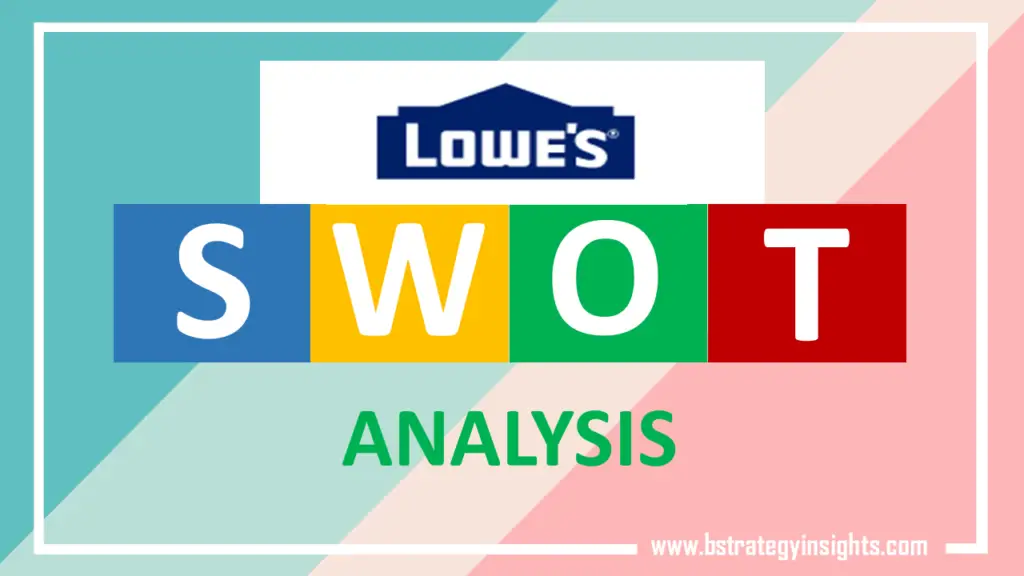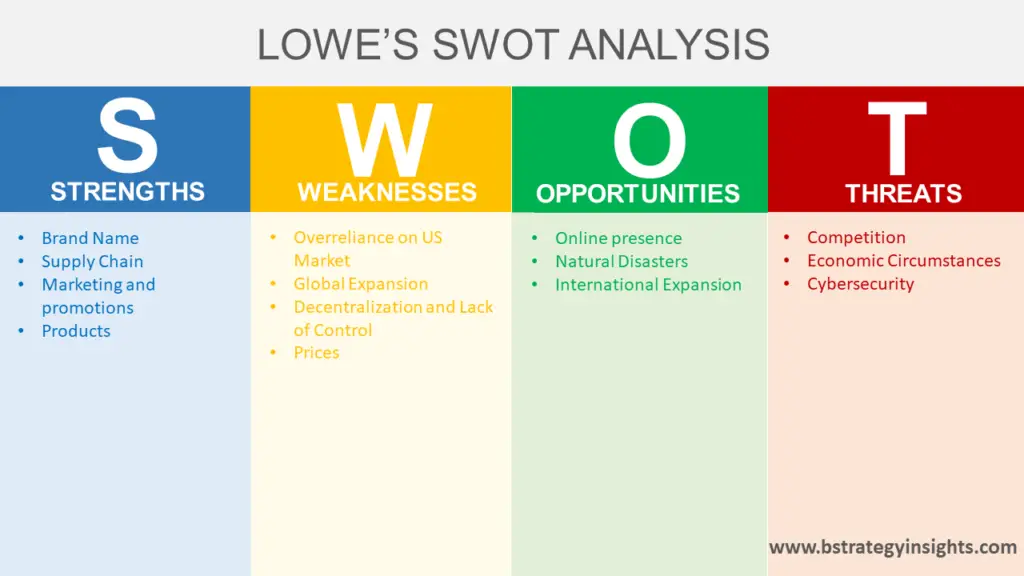
Lowe’s Companies, Inc (or simply Lowe’s) is an American retail company that specializes in home improvement products. The company, established in 1921 in North Carolina, started as a small hardware store. However, the company began expanding after World War II due to an increase in its popularity.
Lowe’s also expanded its business into other ventures, such as Lowe’s Foods, in the same period. The company later went public under the name of Lowe’s Companies, Inc. in 1961. By the following year, the company operated 21 stores and generated annual revenue of $31 million. The company also started trading on the New York Stock Exchange (NYSE) in 1979.
Lowe’s companies went through several ups and downs after that period. These conditions were mainly due to the increase in competition during the times when market conditions worsened. However, the company survived through all of the downtimes and adopted a mega-store format for survival. This way, the company experienced substantial growth in popularity.
The company also expanded its reach nationally and purchased another company with similar operations. Lowe’s also started expanding its operations internationally in Canada and Mexico. However, only the Canadian stores remain. However, the company has not followed its expansion strategy ever since then.
Currently, Lower is among the Fortune 500 American companies. It is the second-largest hardware chain in the US, lagging behind long-time rivals, Home Depot. As of January 29, 2021, the company operates 1,974 home improvement and hardware stores in the US and Canada. As of 2021, the company employs 300,000 employees. It places Lowe’s on the top employers’ list in the US.
Lowe’s reported an average of 20 million customers per week in 2021. The significant customer count also increases the revenues that the company generates. In 2020, Lowe’s reported revenue of $89.597 billion, its highest revenues ever. It was a substantial increase of 24% over the $72 billion in revenues that the company generated in 2019. In the ten years before that, the company only average 4% in revenue increases each year.
Lowe’s – At a Glance
Given below is a summary of Lowe’s company profile.
| Name | Lowe’s Companies, Inc. |
| Website | lowes.com |
| Founder | Lucius Smith Lowe |
| Year founded | 1921 |
| Chief Executive Officer (CEO) | Marvin R. Ellison |
| Headquarters | Mooresville, North Carolina, US |
| Type of corporation | Public |
| Revenues (2020) | $89.597 billion (2020) |
| Company market capitalization | $139.2 billion |
| Key products/ services | Home Décor, Building Products, Hardlines, Gift Cards, Installation services through contractors. |
| Key competitors | The Home Depot, Target, Costco, Walmart, Bed Bath & Beyond, Snap-on, Kingfisher and Best Buy |
Lowe’s SWOT Analysis
SWOT analysis is a tool that helps in identifying a company’s strengths, weaknesses, opportunities, and threats. For each company, these may be different. Strengths and weaknesses are internal factors that provide companies with a competitive advantage. Opportunities and threats are external factors that may occur in the future.

Lowe’s Strengths
Strengths represent internal factors that a company does right but its competitors don’t. Similarly, these factors provide companies with a competitive advantage over others. For Lowe’s, some of the prominent strengths include the following.
Brand Name
One of Lowe’s top strengths is the company’s brand name. Lowe’s is a household name in the home improvement market after Home Depot. The company provides quality products to customers at affordable prices, making it a well-known brand among customers. Due to its brand name, Lowe’s is the second-largest home improvement retailer in the US.
Supply Chain
Another strength that distinguishes Lowe’s from the competition is its efficient supply chain. This supply chain allows both Lowe’s and its customers to benefit from high efficiency. The company has a chain of regional stores and distribution systems. Similarly, it has several distribution centers for its products. It allows Lowe’s to distribute its merchandise efficiently to its stores.
Marketing and promotions
Lowe’s also invests heavily in marketing and promotions, which contribute to increased sales for the company. Lowe’s spent $811 million on advertisements in 2019 and $869 million in 2018. The company also has specific departments to cater to customer needs. On top of that, Lowe’s also focuses on meeting the needs of its customers through special promotional events.
Products
Lowe’s offers customers thousands of different products from which they can choose. On its website, the company has 35 categories, each of which has various subcategories. Each subcategory has hundreds or thousands of products. All these products attract 20 million customers every week for the company.
Lowe’s Weaknesses
Weaknesses are internal factors that companies don’t get right, but their competitors do. These factors also take away any competitive advantage in the specific area. For Lowe’s, some of the weaknesses are as below.
Overreliance on US Market
Lowe’s generates 92%-93% of its total revenues from the US market. The segment has been increasing over the years. However, the company relies too heavily on this market. In the past, the company’s attempts to expand internationally have also failed. As of 2021, Lowe’s only operates in Canada outside the US, which only generates 7% of Lowe’s total revenues.
Global Expansion
Most other retail stores that started in the US have expanded their operations to other countries up to some extent. However, global expansion has been one of Lowe’s weaknesses. It is apparent from Lowe’s failure in the Mexico market that the company cannot handle global expansion properly. In contrast, its main competitor, Home Depot, still operates in Mexico.
Decentralization and Lack of Control
Lowe’s decentralized stores add to its weaknesses. The company does not have similar products across the multiple stores it runs. On top of that, the company does not have sufficient control over its product manufacturing process. It also means that the products will not have similar quality across various markets.
Prices
Lowe’s pricing has allowed it to attract many customers. However, some of its competitors are offering products for much lower prices compared to the company. It is one of the primary reasons why consumers avoid Lowe’s products and opt for the competition. Although Lowe’s understands the problems with prices, it has not taken any action against it.
Lowe’s Opportunities
Opportunities represent external factors that may occur in the future and convert into strengths. These factors can benefit the company, but there are some contingencies. For Lowe’s, the primary opportunities are as follows.
Online presence
The ongoing pandemic tested the business model of many companies. Lowe’s online presence helped significantly in maintaining its sales level. However, Lowe’s still has the opportunity to build on this presence and increase its sales even further. The developments in e-commerce and m-commerce platforms present an opportunity for Lowe’s that can turn into a future strength.
Natural Disasters
Natural disasters can significantly impact a county’s economy. However, companies like Lowe’s thrive in this environment. In case of natural disasters, the demand for home improvement products increases due to the damages caused. It further leads to an increase in sales. Therefore, any natural disaster presents an opportunity for Lowe’s.
International Expansion
Lowe’s has had variable luck with international expansion. The company operates multiple stores in Canada, which contributes 7% to its total sales. However, it also had a failed attempt at expanding in Mexico. Despite that, Lowe’s has the opportunity to expand its operations into international markets. These markets can significantly increase the company’s income.
Lowe’s Threats
Like opportunities, threats are also external factors that can influence a company’s operations in the future. However, these factors cause adverse effects rather than favorable ones. For companies, identifying these is crucial to avoid problems in the future. Some of Lowe’s threats are as follows.
Competition
Lowe’s is the second-largest home improvement supplier in the US. It lags behind its main competitor Home Depot. Apart from that, the company also faces competition from other local and national competitors. Lowe’s faces the threat that the competition can increase in the future and impact its business adversely.
Economic Circumstances
As mentioned, Lowe’s has an overreliance on the US market. Therefore, it faces a threat that the economic conditions in the country will affect its business. Several factors can pose a threat in this situation. These include unemployment rates, the US housing and construction markets, inflation, a decrease in per-capita income, etc. All of these can affect Lowe’s business adversely.
Cybersecurity
Lowe’s has an online presence that has allowed the company to increase its sales significantly. However, cybersecurity poses a threat to its online operations. The company handles credit cards and user accounts on its online stores. All this sensitive information can get leaked or misused in case of cybersecurity breaches. Cybersecurity poses a threat to Lowe’s, similar to any other business that operates online.
Conclusion
Lowe’s is the second-largest home improvement retailer in the US, only behind Home Depot. The company primarily operates in the US market, with some stores in Canada. Lowe’s is a financially stable company that has achieved a stable income throughout the years. A SWOT analysis of the company’s operations is provided above, detailing its strengths, weaknesses, opportunities, and threats.


